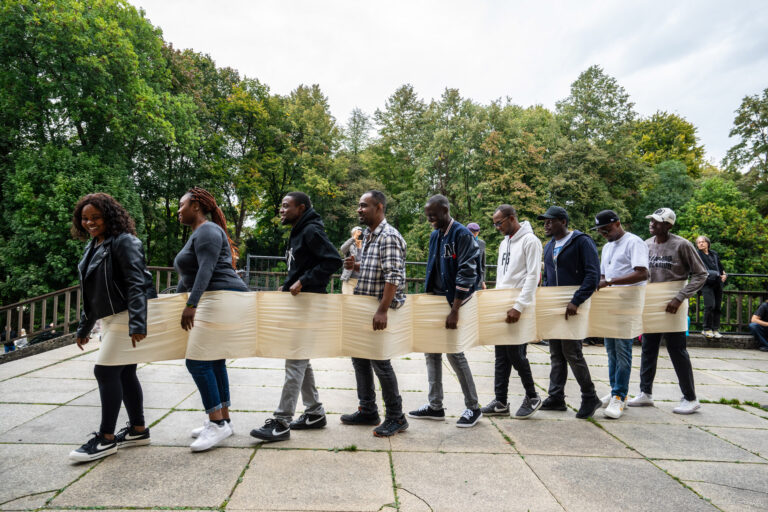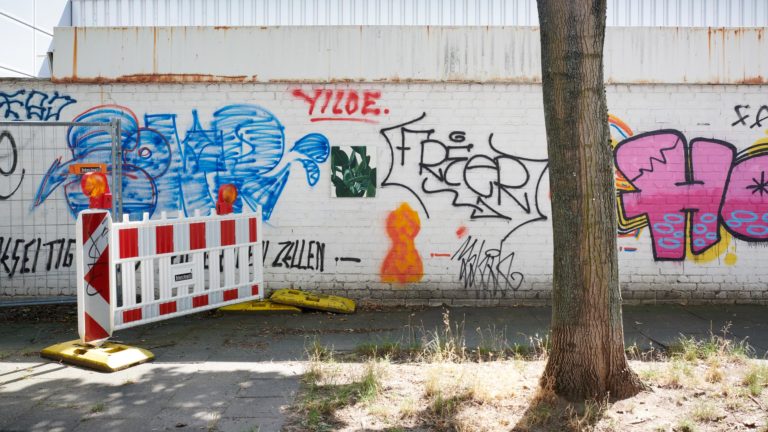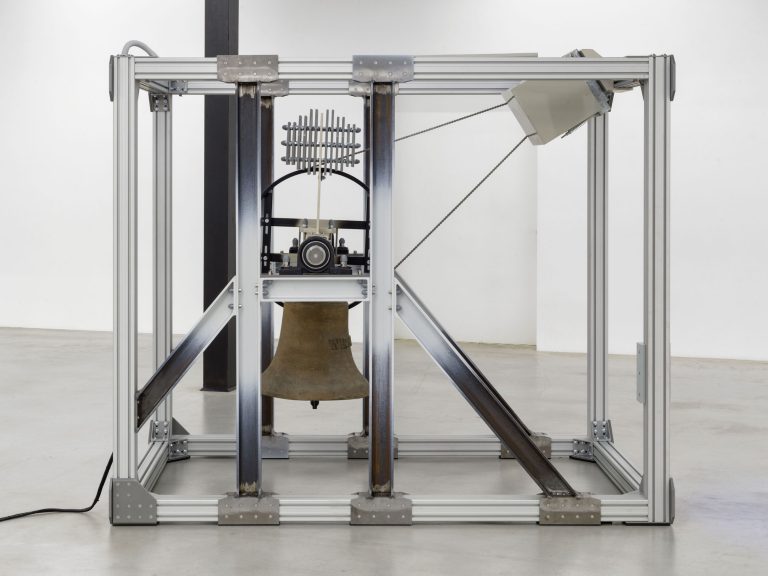Artist: Petrit Halilaj
Exhibition title: ABETARE
Venue: Kölnischer Kunstverein, Cologne, Germany
Date: April 14 – August 2, 2015
Photography: images courtesy of the artist and Kölnischer Kunstverein and Simon Vogel
The basis of Petrit Halilaj’s (b.1986) work as an artist is provided by the (still short) trajectory of his life, which was substantially shaped by the history of his homeland of Kosovo. In installations, drawings and films he deals with the experiences of his childhood and adolescence and, with a great capacity for empathy, he examines thematic complexes including homeland, memory and identity. At the same time, there is always something universally valid bound up with the artist’s works, which seem to have emerged from the world of a storyteller. Thus, they speak to and lastingly touch their viewers, regardless of their relationship to the recent history of south-eastern Europe.
For the exhibition at the Kölnischer Kunstverein, Halilaj has developed an extensive group of works related to his former school in the Kosovan village of Runik. These new pieces include a film, an approximately countless number of sculptures and an installation: these have been distributed throughout the entire building housing the Kölnischer Kunstverein and they make reference to and supplement one another. Halilaj’s earliest consideration of this thematic complex is represented by the film shown in the cinema; the material it is based on appeared more or less incidentally in 2010 and shows the school building one day before it was torn down. Halilaj documents young schoolchildren recounting their memories of the educational institution as they explore the building site. The initial passages reveal their curiosity and their happiness about both the changes and the new school building that is on its way. However, without the presence of any teachers to instil respect, the behaviour of the children and adolescents transforms into a form of aggressiveness: window panes are smashed, pictures are torn from the wall and paint is splashed on to the classroom walls. It is a not unfamiliar flirting with the forbidden, which reflects elements involving questioning and resistance.
Very similar aspects resonate in the works presented in the pavilion, staircase and atrium of the Kölnischer Kunstverein – works which Petrit Halilaj has developed using the former benches and tables of his school. The artist has thus occupied himself with the doodles, drawings and bits of text the students once left behind on the classroom furnishings. Halilaj has used thin metal rods to reconstruct these markings in a greatly enlarged form: in this way he transforms the transgression reflected in this prohibited legacy into something creative. Simultaneously, in spite of their sculptural form, the objects maintain a clearly graphic character and develop an effect suggesting delicate drawings unfolding in space in various parts of the building. The depicted motifs include houses, hearts, birds, flowers, cars, aeroplanes, rockets and rifles, among other things, and they are equally witness to the hopes, yearnings and dreams and to the doubts, fears and worries of the children and adolescents of that time.
In looking at the original tables and benches, where a sheerly ungraspable number of marks and signs are to be found, it is possible to recognise how diverse the mental universe of Runik’s students was. In the lower level of the Kölnischer Kunstverein, Petrit Halilaj has collected a part of the classroom’s furnishings into an installation in which he has neatly placed a few of the school benches in orderly rows while others are heaped up into an incomprehensible pile. In addition, the artist has provided a small number of tables and benches with a unique life of their own, which liberates them from their existence serving purely as models: one school bench seems to have been taken over, so to speak, by sculptural lines while two other representatives of the classroom grow up into the unreachable in the building’s stairway.
Authority, norms and canons, their acceptance and also resistance against them can be seen as overarching themes of the exhibition. While the interplay between acceptance and rejection can be sensed in the film and in the various sculptures, the installation in the second storey of the Kölnischer Kunstverein focusses on their foundations. For this work, Petrit Halilaj has decorated the entire room with wallpaper displaying the artist’s first primer, “ABETARE”, the publication that has also provided the exhibition with its title. The book can be explored page by page on the walls, calling up the familiar learning process before our eyes: at the same time, the foundations of society are also conveyed along with the alphabet.
Simultaneously with the show at the Kölnischer Kunstverein, the Kunst- und Ausstellungshalle der Bundesrepublik Deutschland in Bonn will also be organising an extensive presentation of Petrit Halilaj’s work.















